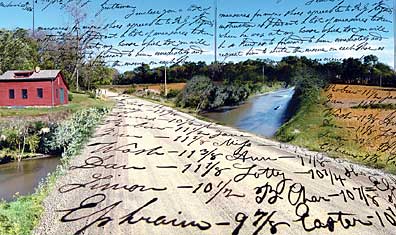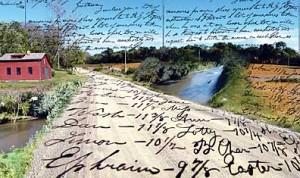
 Stephen Marc has spent most of his adult life behind the lens of a camera, and for the art school graduate and now Arizona State University professor, a significant amount of this time has been spent following and documenting the stories behind the Underground Railroad.
Stephen Marc has spent most of his adult life behind the lens of a camera, and for the art school graduate and now Arizona State University professor, a significant amount of this time has been spent following and documenting the stories behind the Underground Railroad.
“What I thought would be a couple weeks investigating the Underground Railroad turned into nine years,” Marc said.
What came out of those nine years was not only a book entitled “Passage on the Underground Railroad,” but a commitment from Marc to share the stories he came across during his journey visiting historical sites across the United States and in Canada.
Marc was inspired to begin exploring the Underground Railroad in 2000 while working on an exhibition, called Soul Searching, for the CEPA Gallery, a foundation that presents contemporary photo-related art and supports local artists, in Buffalo, New York.
Marc said while he was working on his project, he discovered there were two major Underground Railroad crossings in close proximity. Marc was able to photograph the locations and they spurred his interest in the Underground Railroad.
After he finished the Soul Searching project, the impact of the Underground Railroad sites inspired Marc continued exploring the Underground Railroad in 2001.
“I knew probably about as much as most people do,” Marc said about the Underground Railroad. “What I found is it was much bigger, with incredible stories behind it. I felt it was important that I try to do something to get a sense of how big it was.”
Marc literally went site-to-site photographing and learning the history of the Underground Railroad. While some of his work was accomplished easily enough, gaining access to many of the private sites along the Underground Railroad proved to be a challenge.
Often, Marc would have to display his knowledge of the sites and show his work to owners before they would consider letting him photograph their sites. But like a key, Marc’s work samples helped him gain access to the sites and develop even more helpful connections along the way.
“What I found was that as those doors were closing, the momentum I had behind me is what allowed it to snowball,” Marc said.
The work he had begun was not simply photographs of the sites, but rather, photographs with a twist. Images of documents and artifacts found during that period of time that Marc meshed into the photos he took of the historical sites.
This was something Marc had played around with in Buffalo, New York, and carried over to his Underground Railroad project.
“The photographs I saw usually looked like real-estate photos,” Marc said. “My goal was to really try to do something that would visually instill imagery and take someone in and through the sites.”
Marc photographed historical documents, letters, notes from slave owners, slave tags and many other significant pieces that he then used with the photos he took at different historical sites.
Many times the search for these items, as well as the sites, took Marc far from his home in Arizona, and often at his own expense. The photographer made the most of his time by traveling to several sites at one time, and visiting with some of the connections he made along the way.
His dedication and hard work paid off, and in 2009, “Passage on the Underground Railroad,” Marc’s third book, with his photographs and contributions from Keith Griffler, Diane Miller and Carla Williams, was published.
“I am relieved that it’s finally at the point it needed to be,” Marc said about the book. “Now the book and project have to live their own lives in a way. As you know, I am working on the next material.”
Although he finished the book, Marc continues to explore the Underground Railroad and other historical sites around the country. His most recent photographic journey brought him to Clermont County to document parts of the National Underground Railroad Conference held June 14 to 18.
“For me what was interesting was the heritage tourism,” Marc said about the conference. “In many cases I was going into sites when people were not there. This is an attempt to look at that element of interaction of people with the sites.”
Marc photographed many of these interactions during the conference, especially during the June 15 tour, which included visits to John Parker’s house in Ripley, Oh., Ulysses S. Grant’s birthplace in Pt. Pleasant, the Cranston Memorial Presbyterian Church in New Richmond and more.
He said his goal is to make one or two composites to celebrate the conference.
“I hope I haven’t done my best work yet,” Marc said. “I want to really be supportive of the different sites. It’s a story that is so big it needs to be told.”
